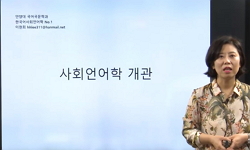Androgen insensitivity syndrome (AIS) is a X-linked disorder of sexual differentiation resulting from defective androgen receptor (AR) function. Androgens are secreted by the testes of 46,XY individuals, but there is loss of target organ response to t...
http://chineseinput.net/에서 pinyin(병음)방식으로 중국어를 변환할 수 있습니다.
변환된 중국어를 복사하여 사용하시면 됩니다.
- 中文 을 입력하시려면 zhongwen을 입력하시고 space를누르시면됩니다.
- 北京 을 입력하시려면 beijing을 입력하시고 space를 누르시면 됩니다.


한국인 안드로젠 저항성 증후군 환자의 안드로젠 수용체 유전자 변이 양상 = Analysis of Androgen Receptor Gene in Korean Patients with Androgen Insensitivity Syndrome
한글로보기https://www.riss.kr/link?id=A3361956
- 저자
- 발행기관
- 학술지명
- 권호사항
-
발행연도
2001
-
작성언어
-
- 주제어
-
KDC
500
-
등재정보
KCI등재,SCOPUS,ESCI
-
자료형태
학술저널
- 발행기관 URL
-
수록면
655-662(8쪽)
- 제공처
-
0
상세조회 -
0
다운로드
부가정보
다국어 초록 (Multilingual Abstract)
Androgen insensitivity syndrome (AIS) is a X-linked disorder of sexual differentiation resulting from defective androgen receptor (AR) function. Androgens are secreted by the testes of 46,XY individuals, but there is loss of target organ response to the hormone. The abnormalities of AR are due to defects in the AR gene, and many mutations causing AIS have been reported since the cloning of AR gene. In this study, we analyzed the AR genes in twelve Korean patients with androgen insensitivity syndrome: 9 patients with complete AIS and 3 patients with partial AIS. DNAs were isolated from patients with AIS, and the coding region of AR gene was amplified by a polymerase chain reaction using 7 pairs of primers (exon B-H). Sequence analysis of the AR gene was performed using direct sequencing and single strand conformational polymorphism (SSCP). The AR gene mutations were identified in 7 out of 12 patients: 6 of 9 patients with complete AIS, and one of 3 patients with partial AIS. Mutations found were as follows: the point mutation (ATT→ACT) at position 680 of exon D, point mutation (TGG→TGC) at position 751 of exon E, point mutation (CAA→TAA) at position 792 of exon F, point mutations (CGC→TGC, GTG→ATG) at position 855 and 866 of exon G, and the deletion of 13 nucleotides (CGTATCATTGCAT) at position 840 of exon G, respectively. To the best of our knowledge, the point mutations found in exon D, exon E, and exon F, and the deletion in exon G have not been observed before. SSCP revealed bands with abnormal mobility in 10 out of 12 patients tested. Mutations were found 5 out of these 10 patients. The other two patients showed no abnormal band on SSCP, but showed mutations by direct sequencing. In conclusion, we have demonstrated the AR gene mutations, including three novel mutations, in Korean patients with AIS, and these abnormalities might be related to the pathogenesis of androgen insensitivity syndrome.
동일학술지(권/호) 다른 논문
-
모체의 말초혈액에 존재하는 태아 세포를 이용한 산전 유전 진단 새로운 비침습적 방법
- 대한산부인과학회
- 양영호(Young Ho Yang)
- 2001
- KCI등재,SCOPUS,ESCI
-
침윤성 자궁경부암조직에서 Ureaplasma urealyticum의 검출
- 대한산부인과학회
- 안은모(Un Mo Ahn)
- 2001
- KCI등재,SCOPUS,ESCI
-
임신 중기 양수내 인슐린유사성장인자-I, II 및 인슐린 유사성장인자결합단백질-3과 신생아 출생 체중과의 연관성
- 대한산부인과학회
- 김지영(Ji Young Kim)
- 2001
- KCI등재,SCOPUS,ESCI
-
- 대한산부인과학회
- 권혜경(Hye Kyung Kwon)
- 2001
- KCI등재,SCOPUS,ESCI




 KISS
KISS




